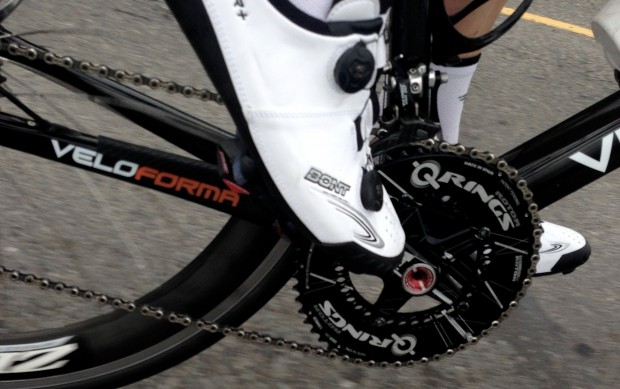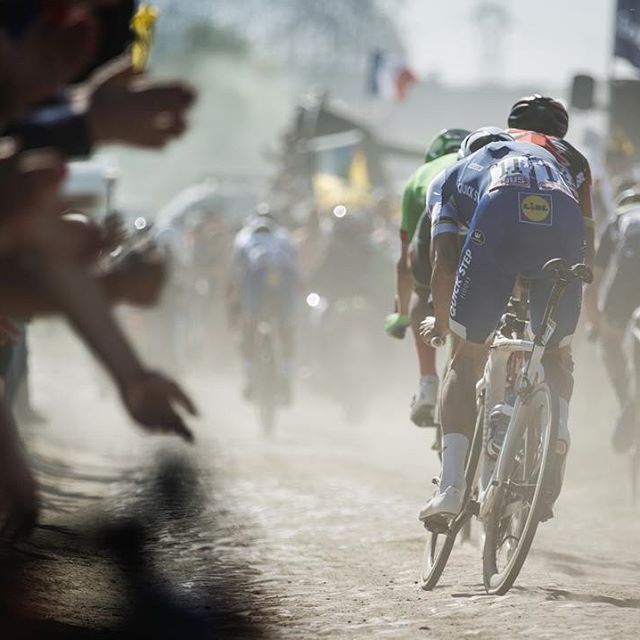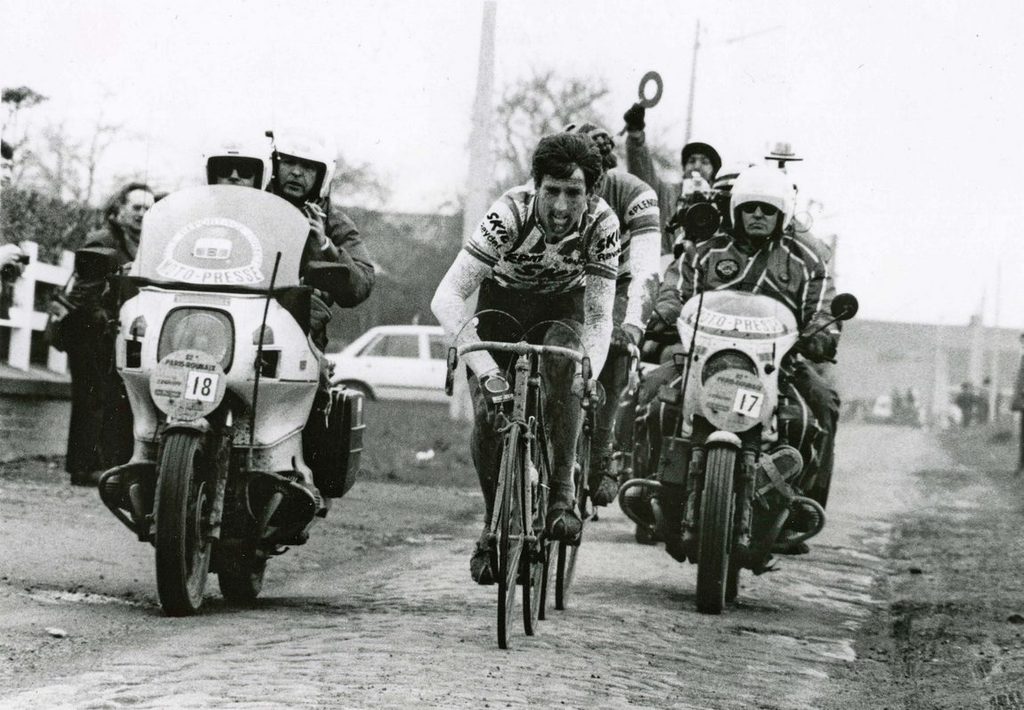The Roundness of Being

Evolution doesn’t really seem to be part of the picture anymore, at least not where humans and our direct reports are concerned. We control an astounding number of genetic defects in ourselves, our pets, and agriculture while Science and Technology give Natural Selection swirlies in the locker room.
Take exercise-induced asthma, which is a condition I suffer from. Evolution suggests that if running from a predator invokes a crippling airflow obstruction, you were meant to be eaten. And even if capture was avoided through some staggering failure of circumstance, the predator should locate you wheezing away somewhere under a nearby bush and make a leisurely meal of you.
In my early teens, I saved my money to buy my first real race bike, a black and hot pink Cannonwhale SR600 with Shimano 105 and BioPace chainrings. BioPace chainrings weren’t the original non-round rings – they have been around since the turn of the twentieth century, shortly after some bright spark stumbled upon the fact that we were evolved to walk, not ride a bike.
I’m not a scientist, but I am given to understand that based on our complimentary pairs of muscles, as Cyclists our legs are only really good at pushing and pulling. The more lateral the movement involved, the less efficient we are at applying the strength of our muscles into the movement. This fundamentally flawed architecture results in a powerful downstroke and a strong upstroke, but with “dead spots” near the bottom and top of the pedal stroke. In other words, our muscles are designed to walk rather than ride a bike. Whoever made that decision should get fired, but it seems I don’t have the authority to “fire” Evolution. I think the Church is also trying to get it fired, also with no luck. Apparently Evolution is tenured.
To solve the problem of the dead spot, non-round rings seek to change the diameter of the chainring by ovalizing it so the rider experiences an effectively bigger gear at some points of the stroke and an effectively smaller gear at others. The problem with BioPace was that the rings weren’t the right shape and were set up so the effective chainring size was biggest where the lateral movement of the leg was also greatest. In addition to being a mind trip, they gave a peculiar feeling to the rider, as though they were riding on a perpetually softening tire. The rings went the way of the Dodo.
In Science and Technology’s ongoing effort to show Evolution the door, component manufacturers continue to experiment with non-round rings. Enter the modern incarnations: Q-Rings and Osymetric Rings. Q-Rings use a similar (but not identical) shape to BioPace but allow for changing the position of the rings based on the rider’s individual pedaling style with the idea that the largest effective gear aligns with the rider’s power stroke and the smallest effective gear with the dead spot. Osymetric uses an insane-looking shape which they claim better matches the irregular application of power caused by the dynamics of our poorly evolved legs.
I’ve spent the last month or so riding Q-Rings, and I have to admit you don’t feel any of the dreaded “biopacing” hobble. But in the long term, they also didn’t seem to offer any tangible advantage; after adjusting them according to their instructions (which takes some time), I found that depending on the day and the terrain, they were good, but never great. On any given ride, I might power up a grade with V in reserve for a surge at the top, and then find myself slipping into the little ring on a climb I normally ride sur la plaque. On the next ride, the scenario would reverse and I’d motor up a climb in the big ring that normally requires the 39 and little ring some faux plat into the wind a little later on. On balance, I found myself struggling to find power. One point to consider is all this is based on feel and knowing the gear ratios I use on familiar terrain – my use of a V-Meter and my avoidance of power meters means there is no tangible data to support or counter my conclusions. In other words, I’m not distracted by the facts.
I noticed that of the riders whose use of Q-Rings inspired my own experimentation – Marianne Vos and Johan Vansummeren – both have a relatively forward position with respect to their bottom bracket while I sit quite far back; maybe the rings favor such a position over mine. In any case, switching back to round rings, I’m able to find power more easily as well as being better able to maintain a cadence and accelerate. In other words, I’m more comfortable more often on round rings.
Maybe my pedaling style uses too wide a power band not suited for the Q’s, or maybe I have trascended evolution to favor rotational locomotion over bipedal. That last notion is not outside the realm of possibility because I can confirm I am pretty terrible at walking. The idea behind non-round rings continues to makes sense, but for me Q-Rings don’t do the job. I’ll give Osymetric a go if I get the opportunity but until then, I’m glad to be back in the round.

